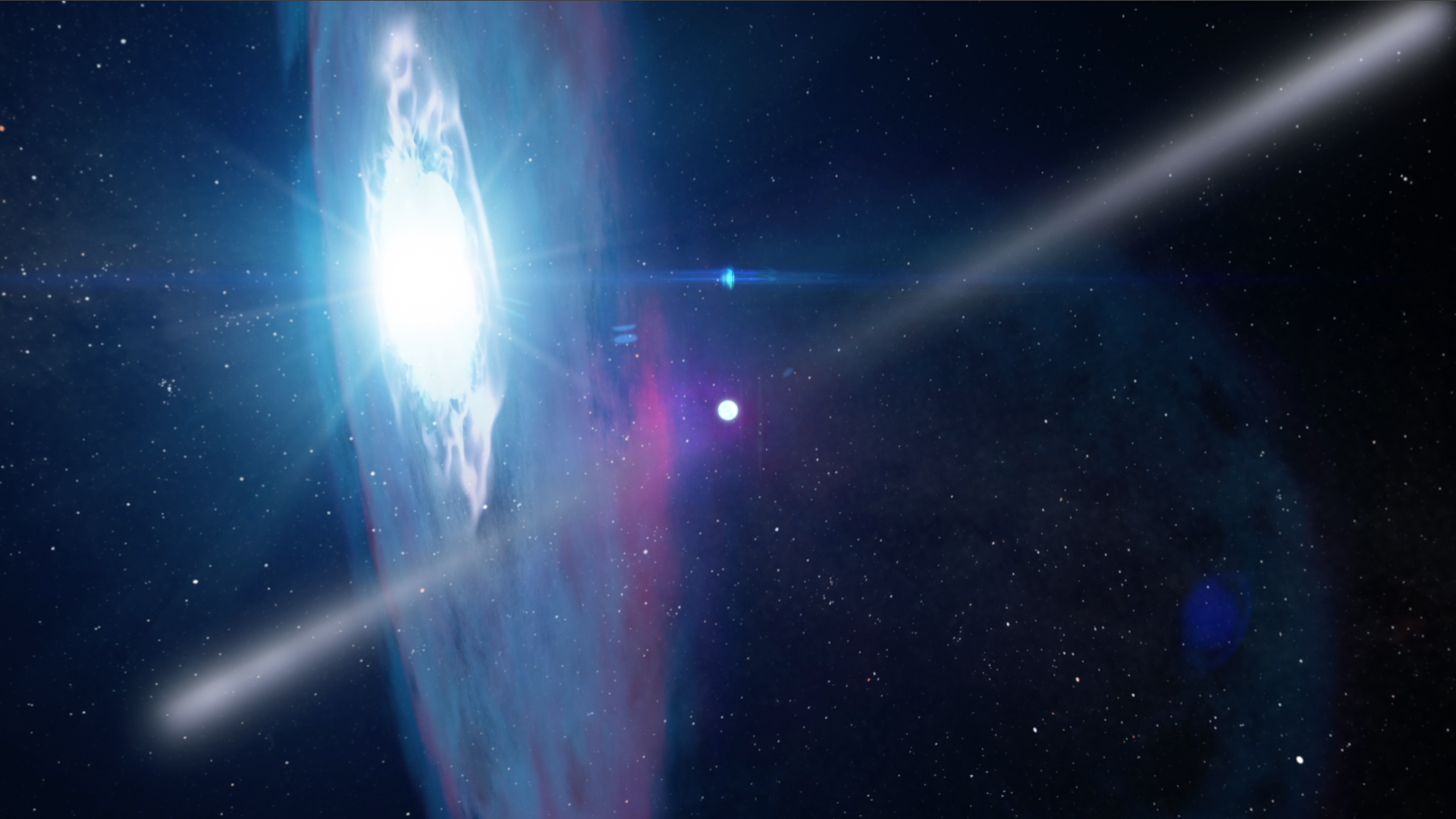Stellar Odd Couple Makes Striking Flares
Every 3.4 years, pulsar B1259-63 dives twice through the gas disk surrounding the massive blue star it orbits. With each pass, it produces gamma rays. During the most recent event, NASA's Fermi Gamma-ray Space Telescope observed that the pulsar's gamma-ray flare was much more intense the second time it plunged through the disk. Astronomers don't yet know why.
For the B1259 binary animation, go here.
Short narrated video about B1259.
Watch this video on the NASAexplorer YouTube channel.
For complete transcript, click here.

This diagram, which illustrates the view from Earth, shows the binary's anatomy as well as key events in the pulsar's recent close approach. Credit: NASA/Goddard Space Flight Center/Francis Reddy

This diagram, which illustrates the view from Earth, shows the binary's anatomy as well as key events in the pulsar's recent close approach. No Labels. Credit: NASA/Goddard Space Flight Center/Francis Reddy
For More Information
Credits
Please give credit for this item to:
NASA/Goddard Space Flight Center. However, each image should be credited as indicated above.
-
Animators
- Walt Feimer (HTSI)
- Scott Wiessinger (USRA)
-
Illustrator
- Francis Reddy (University of Maryland College Park)
-
Video editor
- Scott Wiessinger (USRA)
-
Narrator
- Scott Wiessinger (USRA)
-
Producer
- Scott Wiessinger (USRA)
-
Scientist
- Aous Abdo (George Mason University)
-
Science writer
- Francis Reddy (University of Maryland College Park)
Missions
This page is related to the following missions:Series
This page can be found in the following series:Tapes
The media on this page originally appeared on the following tapes:-
Odd Couple Binary
(ID: 2011075)
Wednesday, June 29, 2011 at 4:00AM
Produced by - Robert Crippen (NASA)
Datasets used
-
[Fermi]
ID: 687
Note: While we identify the data sets used on this page, we do not store any further details, nor the data sets themselves on our site.
Release date
This page was originally published on Wednesday, June 29, 2011.
This page was last updated on Wednesday, May 3, 2023 at 1:53 PM EDT.
